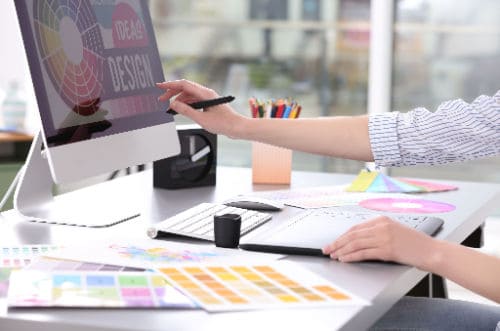From promoting a concert to sharing critical information in a doctor’s office, posters are a great visual tool to spread information. While there’s no one-size-fits-all approach to designing a great poster, there are some characteristics that separate effective posters from not-so-effective posters, and our graphic designers want to share some essential design tips to make sure yours is in the “Effective” category. Get the scoop below!
Do: Demonstrate your message clearly and simply. Have one main point, and a clear call-to-action (Buy Tickets, Learn More At *website URL*, for example) that directs viewers what to do after seeing your poster.
Don’t: Overcrowd your poster to include a ton of information.
Do: Give the poster a sense of balance with color, graphics, and text.
Don’t: Lump all your elements on one side of the poster. For example, displaying all your information on the top of the poster and leaving the bottom blank.
Do: Size elements in order of importance. Use a larger font size for information you really want the viewer to remember about your poster.
Don’t: Make everything one size.
Do: Consider how far away someone will be when viewing your poster, and if it will be easy to read.
Don’t: Make the font size too small and make people squint to see your poster.
Do: Express a sense of emotion with the way you use color. Need some color tips? We got ‘em.
Don’t: Ignore the fact that the colors you choose really will make a difference in how effective your poster is.
Do: Play around with fonts. Much like the size, you don’t want everything to be the same and blend together.
Don’t: Use every font in your library.
Do: Use photography to emphasize your design when needed. Sometimes, a photograph can capture something that text, graphics, and illustrations can’t.
Do: Be playful and use humor when appropriate. Doing so will make your poster easier to remember!
Don’t: Swipe someone else’s poster design and edit with your information. Your poster should be uniquely yours.
Do: Play with negative space.
Don’t: Feel the need to fill space just to fill it. Every element should have a purpose.
Do: Create a beautiful piece of artwork that people will want to keep and collect.
Do: Break the rules!
Need some help creating a poster that gets noticed? Contact us today!

